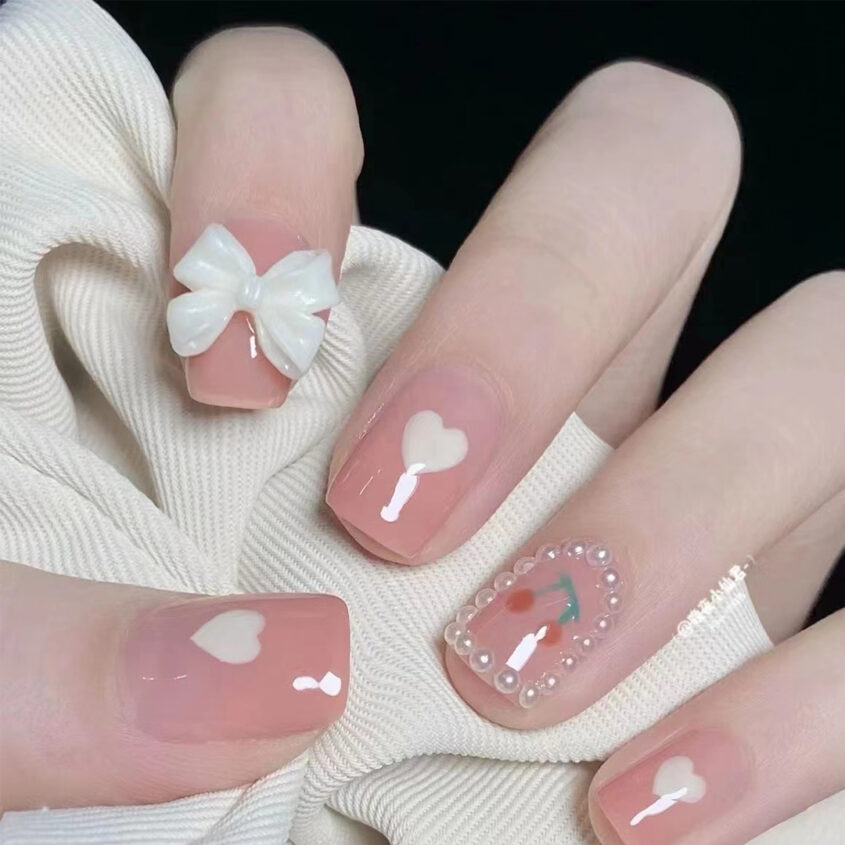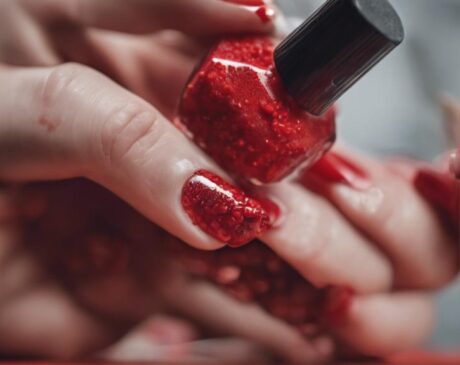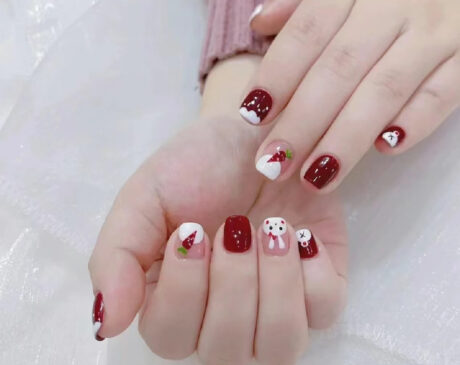What can you use instead of nail glue?

Nail enthusiasts often rely on the strong bonding properties of nail glue to ensure that artificial nails and intricate designs are held firmly in place. However, there are times when nail glue is unavailable, or when people may prefer to avoid its chemical components for health or environmental reasons. This comprehensive guide delves into a variety of safe and effective nail glue alternatives, offering creative and practical solutions for both casual and avid nail practitioners.
Understanding Nail Glue
Nail Glue Ingredients and Characteristics
Known for its strong bonding properties, nail glue is primarily made from cyanoacrylate. This compound is known for its ability to bond quickly, creating a strong and long-lasting bond. Due to its strength and quick-drying properties, it is a popular choice in both professional and home nail care.
Wide range of nail adhesive applications and benefits
The main use of nail glue is to affix fake nails and secure various nail decorations. Its strong adhesion ensures that the nail enhancements are able to withstand daily activities, thus maintaining the beauty of the nail art for a long time. This durability is a major reason for its widespread use in the nail art world.
Why Choose Nail Glue Alternatives?
Addressing Allergies and Skin Sensitivities
Nail glue, although effective, can sometimes cause allergic reactions or skin sensitivities in some people. These reactions range from mild irritation to more serious dermatologic issues, prompting the need for safer alternatives.
Availability and cost-effectiveness considerations
In some cases, nail glue may not be readily available, or when people are looking for a more economical option. In such cases, finding alternatives that are both effective and readily available may be a practical solution.
Household Products as Nail Glue Alternatives
The Convenience of Double-Sided Tape
In the absence of nail glue, double-sided tape can be a quick temporary fix. It’s especially useful for temporary manicures or for testing designs before adopting a more permanent solution.
Achieve Light Adhesion with Clear Nail Polish
Clear nail polish, which can be found in most beauty kits, acts as a mild adhesive for attaching lightweight nail decorations. While it doesn’t have the same adhesive power as nail glue, it’s sufficient for less demanding applications.
Handmade DIY Nail Glue
Homemade Nail Glue Recipe
Making nail glue at home is both fun and practical. A simple recipe involves mixing PVA glue with clear nail polish to produce a temporary adhesive that will hold nail decorations in place in no time.
Effective application techniques
The success of homemade nail glue depends heavily on the application technique. Applying thin, even layers and allowing enough drying time is essential for optimal results.
Commercial Nail Adhesive Alternatives
Ease of Use and Safety of Nail Adhesive Sheets
Nail adhesive tabs are a great alternative to traditional nail glue. These pull tabs are easy to use, won’t damage natural nails, and are available in a variety of sizes to fit different nail shapes and types.
Versatility of press-on nails
Press-on nails usually come with a pre-applied adhesive and are a convenient alternative to using nail glue. They are available in a variety of styles and lengths, making them a versatile option for those looking for a quick and easy manicure solution.
Safety Considerations for Nail Glue Alternatives
Prioritize safe application
When trying a new adhesive, it is critical to perform patch testing to ensure that no adverse skin reactions occur. This step is especially important for those with sensitive or allergic skin.
Understand long-term nail health
Frequent use of any adhesive product can affect the health of your natural nails. It is important to be aware of any changes in nail health and to regularly wean your nails from adhesives.
Nail Care Expert Tips
Keeping Nails Healthy During Artistic Expressions
Consistent nail care is vital to maintaining healthy nails, especially when applying and removing manicures frequently. Regular moisturizing, proper cleaning, and occasional trimming of artificial nails help keep nails strong and healthy.
Maximize the durability of your manicure
To prolong the life of your manicure, it is recommended to minimize exposure to water and harsh chemicals. Wearing gloves and a top coat when doing chores also helps to maintain the integrity of your manicure.
Exploring alternatives to traditional nail glue opens up a world of possibilities for those passionate about nail art. Whether it’s for health, convenience, or creativity reasons, these alternatives offer a range of solutions to meet a variety of needs. By trying out these options, you can continue to enjoy the art of nail decorating while also prioritizing your health and well-being.
Frequently Asked Questions
How do household items like duct tape compare to the durability of nail glue?
While items such as double-sided tape are useful in a pinch, they typically don’t provide the same lasting hold as nail glue. They are better suited for short-term or temporary manicure applications.
Are there any completely natural alternatives to nail glue?
Completely natural alternatives are rare, but some DIY formulas use less harsh ingredients and offer a more skin-friendly option compared to commercial nail glues.
Can homemade nail glue match the effectiveness of commercially available nail glue?
Homemade nail adhesive is very effective for lightweight and short-term applications, but typically does not provide the same strength and durability as commercial nail adhesive products.
Are adhesive tabs suitable for all types of false nails?
Adhesive sheets can be used for most types of false nails. However, their effectiveness may vary depending on the weight and material of the nail.
What is the safest way to remove alternative adhesives without damaging my natural nails?
To safely remove any adhesive, it is best to use a mild nail polish remover and carefully remove the false nails. Avoid pulling or squeezing your nails to prevent damage to the natural nail bed.




